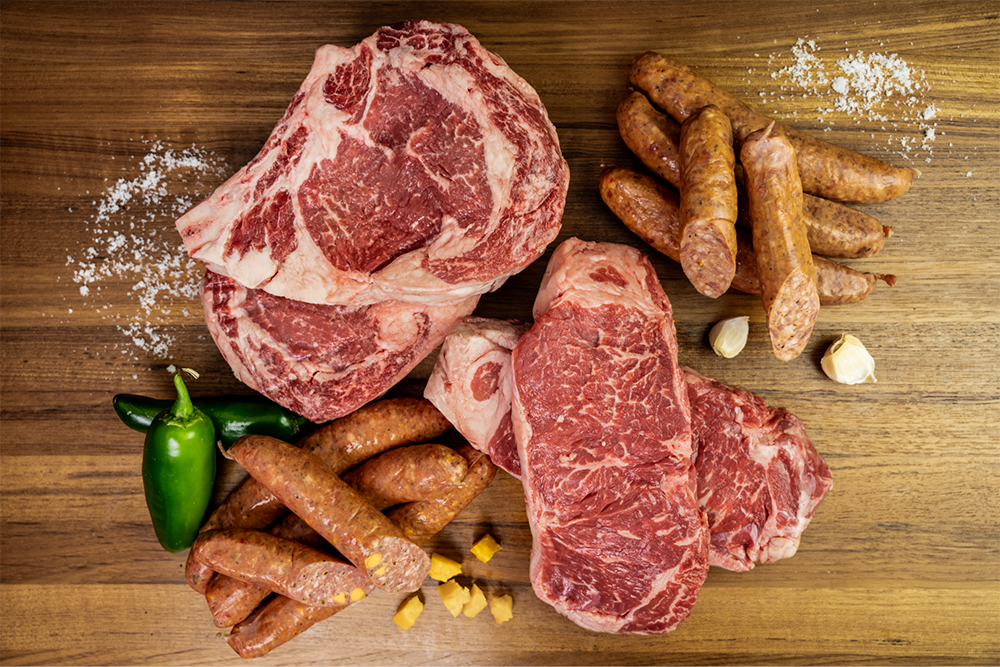Why Bagley Farms Meat Market Edwardsville IL Is the Best Choice for High Quality Meats
Discover the Art of the Butcher's Cut in a Modern Meat Market
In the ever-evolving landscape of contemporary meat markets, the butcher's cut has transcended its traditional origins, merging age-old workmanship with contemporary techniques. What genuinely sets the contemporary butcher apart is their ability to build a deeper link between customers and the origins of their meat.
Advancement of Butchery Methods
The evolution of butchery strategies shows a rich tapestry of advancement and adaptation driven by innovations in technology, adjustments in consumer need, and a deeper understanding of meat scientific research. Historically, butchery was a craft passed down via generations, with methods refined over centuries to make best use of yield and taste. Nevertheless, the industrial transformation introduced automation, transforming conventional practices and making it possible for massive processing.
The mid-20th century saw butchery methods even more fine-tuned by scientific understandings right into muscle mass biology and meat aging, improving both inflammation and taste. Innovations like vacuum packaging and refrigeration extended item shelf-life, allowing butchers to branch out offerings and improve quality assurance. This period also noted the rise of specific devices, such as band saws and meat slicers, which enhanced accuracy and effectiveness in meat handling.

Electronic systems now aid in monitoring animal provenance and enhancing cuts to fulfill specific consumer preferences. Additionally, a resurgence in artisanal butchery has actually emerged, mixing traditional abilities with contemporary knowledge to cater to customers looking for honest and lasting meat alternatives.
Comprehending Meat Cuts
Recognizing the complexities of meat cuts is important for both butchers and consumers seeking high quality and worth. For butchers, specific cuts mirror ability and respect for the craft, ensuring minimal waste and optimum yield.

Recognizing muscle mass structure is critical; muscular tissues made use of extra regularly by the animal have a tendency to be tougher and are best matched for slow cooking methods, while less-used muscle mass, like those located in the loin, are extra tender and suitable for grilling or roasting. Familiarity with these differences encourages consumers to make educated choices, enhancing their culinary undertakings.
Selecting High Quality Meat
Choosing the ideal meat involves greater than just picking a visually enticing piece from the display. bagley farms meat market edwardsville il. The art of picking quality meat needs a discerning eye and understanding of specific features that indicate freshness and quality. To start with, take note of the shade; beef needs to have an intense, cherry-red shade, while lamb ought to show a soft pink tone, and pork a pale pink. This indicates the meat is fresh and hasn't been exposed to oxygen for also long.
Second of all, think about the marbling, which refers to the white flecks of fat within the muscle mass. Proper this content marbling is a vital indication of tenderness and taste, as it thaws during food preparation, improving the meat's juiciness. Keep in mind, higher marbling usually associates with exceptional high quality cuts, such as USDA Prime.
Structure is another essential element; meat should feel solid to the touch, not slimy or extremely soft. Additionally, bear in mind the scent. Fresh meat needs to have a clean, neutral scent, without any kind of sour or off-putting smells.
Coupling Cuts With Food Preparation Approaches

Alternatively, tougher cuts like brisket and chuck roast are rich in collagen, which damages down right into jelly when cooked slowly. These cuts are excellent for braising or slow roasting, allowing the meat to tenderize gradually and create deep, complicated tastes. Cuts such as short ribs and pork shoulder get on well with slow-cooking techniques, where expanded cooking times change their durable appearances into succulent dishes.
Lamb shanks and oxtail, which need extended cooking to soften, are best prospects for cooking or slow-moving Read More Here simmering. These approaches coax out abundant, passionate flavors while maintaining moisture. By comprehending the special features of each cut, cooks and home chefs alike can boost their cooking developments, making certain each recipe is both pleasing and unforgettable.
The Butcher's Role Today
Browsing the advancing landscape of the contemporary meat market, the butcher's role today expands beyond mere prep work of cuts. Contemporary butchers are culinary craftsmens, instructors, and advocates for lasting methods. They bridge the void between the ranch and the fork by making certain honest sourcing, understanding pet husbandry, and prioritizing transparency in the supply chain. This change reflects the expanding consumer need for quality over amount, where provenance and animal well-being are critical.
In addition to crafting specific cuts, butchers now involve directly with clients, offering cooking recommendations and tailoring choices to match private demands and preferences. Their knowledge in meat aging, marbling, and taste profiles encourages consumers to make educated choices, improving their culinary experiences. This tailored solution exemplifies the butcher's evolving function as a relied on consultant in the kitchen.
Additionally, butchers are critical in decreasing waste, utilizing entire pets to create varied items such as sausages and stocks. This thorough approach not only values the animal yet also straightens with contemporary sustainability objectives. In this way, the contemporary butcher embodies both custom and innovation, adapting to an look at this site ever-changing market while maintaining the artistry and stability of their craft.
Verdict
The contemporary butcher's craft elaborately weaves typical techniques with modern-day innovations, highlighting sustainable techniques and ethical sourcing. Proficiency in recognizing diverse meat cuts and quality indicators empowers butchers to offer educated recommendations, lining up particular cuts with optimum cooking techniques. This expertise not only raises culinary experiences yet likewise enhances the link between consumers and the origins of their food. By honoring historical methods while accepting modern demands, the butcher's role stays essential in today's sophisticated meat market (bagley farms meat market edwardsville il).